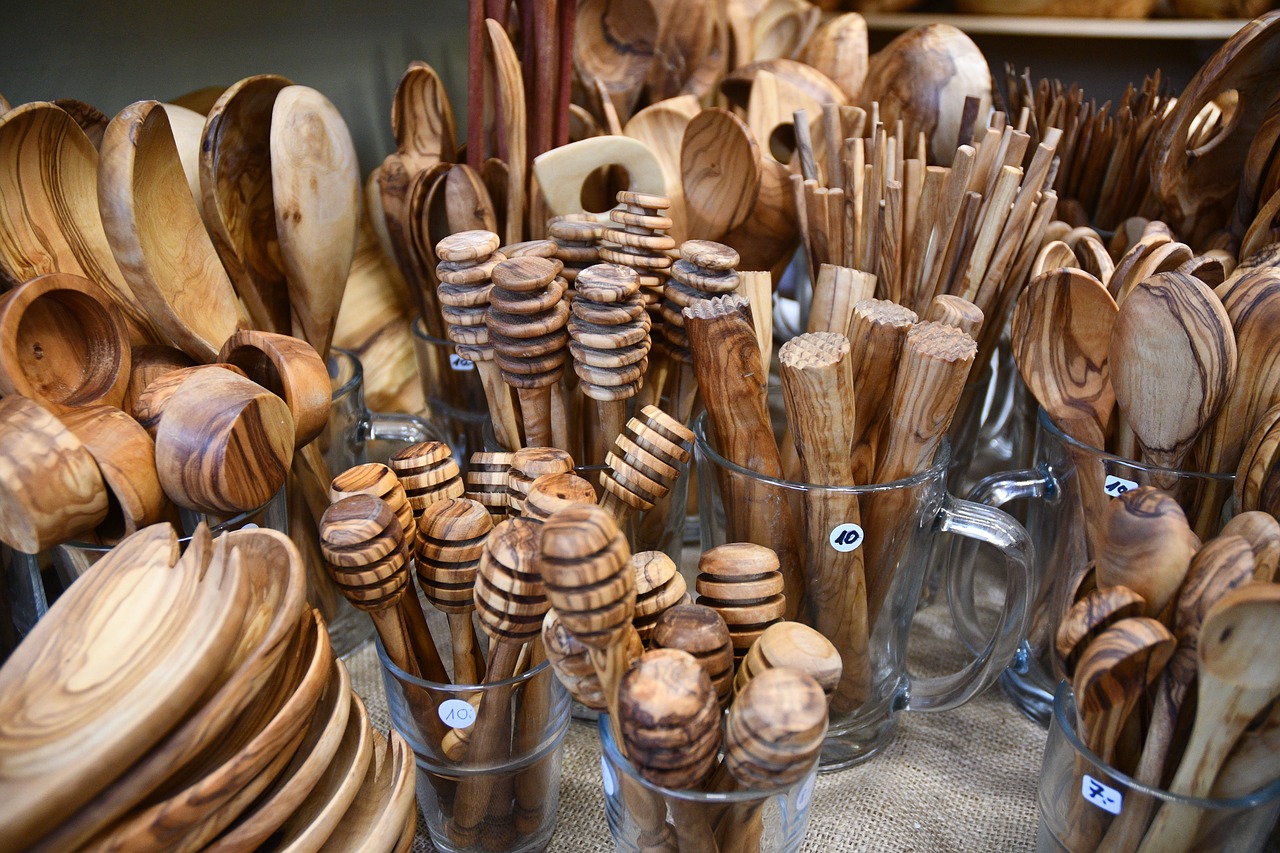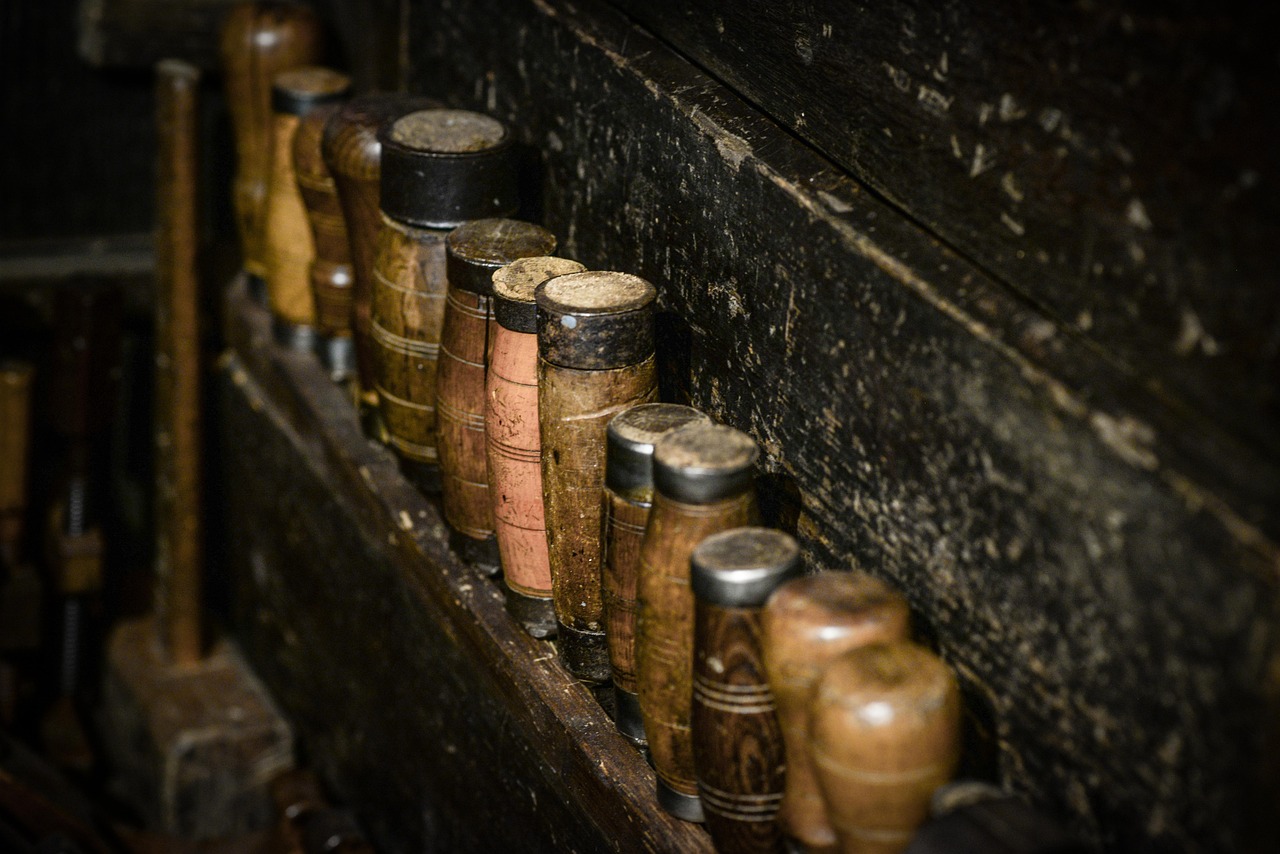Mastering Wooden Model Making: Tips and Techniques
Welcome to the fascinating world of wooden model making! If you've ever marveled at intricately crafted wooden models, you might have wondered how to bring such creations to life. Whether you're a complete beginner or a seasoned craftsman looking to refine your skills, this article is here to guide you through the essential tips and techniques that will elevate your wooden model-making game. Imagine the satisfaction of holding a beautifully crafted piece that you made with your own hands—it's not just an art; it's a journey of creativity, patience, and precision.
In this guide, we'll delve into the nitty-gritty of choosing the right materials, mastering the tools of the trade, and developing your design skills. You'll learn about assembly techniques that ensure your models stand the test of time, as well as finishing touches that add that professional flair. Along the way, we’ll highlight common mistakes that can trip up even the most enthusiastic beginners and provide resources to help you continue learning and improving. So, grab your tools and let’s get started on this exciting adventure!
When it comes to wooden model making, the foundation of your project lies in the type of wood you choose. The right wood not only determines the durability of your model but also its overall aesthetic appeal. Softwoods like pine and cedar are great for beginners due to their ease of manipulation, while hardwoods such as oak and maple offer superior strength and a beautiful finish for more advanced projects.
Each type of wood has its own unique properties, and understanding these can significantly impact your model’s final outcome. For instance, plywood is excellent for flat surfaces and intricate cuts, while basswood is favored for its fine grain, making it ideal for detailed carvings. As you explore different woods, consider factors such as weight, grain, and how well they take stains or paints. A well-chosen wood can transform your model from good to stunning!
Now that you've selected your wood, it’s time to talk tools. A well-equipped workshop is a game changer in wooden model making. The right tools can make your work easier, more efficient, and ultimately more enjoyable. Essential tools include:
- Saws: For cutting your wood to size.
- Chisels: For detailed carving and shaping.
- Adhesives: For strong and lasting bonds.
- Sandpaper: For smoothing edges and surfaces.
Each tool has its specific purpose, and knowing how to use them effectively can drastically improve your craftsmanship. For example, a fine-toothed saw is perfect for delicate cuts, while a power saw can save time on larger pieces.
The debate between hand tools and power tools is a common one among model makers. Each has its advantages and disadvantages, and the choice often comes down to personal preference and the specific requirements of your project. Hand tools, such as chisels and hand saws, offer a level of precision and control that can be invaluable for intricate work. They allow you to feel the wood and make adjustments on the fly, almost like an artist with a brush.
On the other hand, power tools can significantly speed up the process, especially when working on larger projects. They can handle tough materials and make repetitive cuts with ease. However, they may lack the subtlety needed for detailed work. Ultimately, it's about finding the right balance and knowing when to reach for each type of tool.
Using hand tools can be incredibly rewarding. They allow for a connection to the material that power tools sometimes take away. Imagine carving a piece of wood with a chisel, feeling the grain beneath your fingers as you shape it into your vision. Hand tools promote a slower, more thoughtful approach to model making, which can lead to greater satisfaction in your work.
Power tools, on the other hand, can save you a significant amount of time, especially for repetitive tasks. If you're working on multiple models or larger pieces, having a power saw or a router can make all the difference. They can help you achieve uniformity in cuts and finishes, allowing you to focus on the creative aspects of your project rather than the labor-intensive parts.
To keep your model-making tools in top shape, regular maintenance is essential. This includes cleaning, sharpening, and proper storage. A well-maintained tool not only performs better but also lasts longer. For example, keep your chisels sharp for clean cuts and your saw blades free of debris. Store your tools in a dry place to prevent rust and damage. Remember, a little care goes a long way!
A successful model begins with a solid design. Before you even pick up a tool, take the time to sketch out your ideas. Visualizing your project can help you anticipate challenges and refine your approach. Use graph paper or design software to create accurate proportions, and don't hesitate to make adjustments as you go. Planning is key; think of it as laying the groundwork for a beautiful building. The more thought you put into your design, the smoother your construction process will be.
Once your pieces are ready, it’s time for assembly. Effective joining techniques are crucial for creating sturdy models. Common methods include:
- Gluing: A simple yet effective method for most joints.
- Doweling: Provides strong connections for larger pieces.
- Screws: Great for disassembly and reassembly.
Choosing the right technique depends on the specific requirements of your model. For example, gluing is perfect for smaller pieces, while doweling is ideal for larger structures that need extra strength. Always ensure that your joints are secure to avoid any mishaps down the line.
The finishing touches can make or break your wooden model. Sanding, staining, and sealing are essential steps that enhance both appearance and durability. Sanding smooths out rough edges, while staining adds depth and character to the wood. Finally, sealing protects your model from moisture and wear, ensuring it lasts for years to come. Think of these steps as the icing on the cake—without them, your model may not reach its full potential.
Even the most experienced model makers can fall into traps. Common mistakes include rushing through the design phase, using the wrong type of glue, or neglecting to measure accurately. To avoid these pitfalls, take your time and double-check your work. Remember, it’s better to spend a little extra time upfront than to rush and face issues later. Learning from mistakes is part of the journey, so embrace them as opportunities for growth!
If you're eager to expand your knowledge and skills, there are plenty of resources available. Consider exploring books on woodworking, enrolling in online courses, or joining local model-making communities. Connecting with fellow enthusiasts can provide invaluable insights and inspiration. Remember, the journey of mastering wooden model making is ongoing, and there’s always something new to learn!
Q: What is the best wood for beginners?
A: Softwoods like pine or basswood are ideal for beginners due to their ease of handling and availability.
Q: How do I choose between hand tools and power tools?
A: It depends on your project. Hand tools offer precision for intricate work, while power tools are better for larger, repetitive tasks.
Q: What finishing techniques should I use?
A: Sanding, staining, and sealing are essential for protecting your model and enhancing its appearance.
Q: How can I avoid common mistakes?
A: Take your time during the design phase, measure carefully, and don’t rush through assembly.

Choosing the Right Wood
When it comes to wooden model making, the choice of wood is not just a matter of preference; it's a critical factor that can make or break your project. Imagine crafting a beautiful model only to have it fall apart because the wood you chose was too brittle or warped. To avoid such pitfalls, understanding the different types of wood and their properties is essential. Let's delve into the world of wood selection!
There are several types of wood you can consider, each bringing its unique characteristics to your project. Here are some popular choices:
- Basswood: This is a favorite among model makers due to its lightweight nature and fine grain, making it perfect for intricate details.
- Pine: Known for its affordability and availability, pine is great for larger models but can be prone to knots, which may affect its appearance.
- Mahogany: If you're looking for something with a rich color and durability, mahogany is an excellent choice, although it can be more expensive.
- Balsa: This ultra-light wood is perfect for scale models and quick builds, but it’s not as strong as other types.
When selecting wood, consider the following factors:
- Project Requirements: What kind of model are you making? If it’s a detailed scale model, basswood or balsa might be your best bet. For sturdier constructions, opt for hardwoods like mahogany.
- Workability: Some woods are easier to cut and shape than others. Basswood, for example, is soft and easy to work with, while harder woods may require specialized tools.
- Finish: Think about how you want your finished model to look. Woods like mahogany can take stains and finishes beautifully, enhancing their natural beauty.
Another important aspect to consider is the wood's grain and texture. The grain can affect not only the appearance but also the strength of your model. A tight, straight grain is generally more desirable as it provides better stability. Before making your final choice, it’s wise to inspect the wood for any defects such as knots, warping, or cracks, which can compromise your model's integrity.
In summary, choosing the right wood is a balance of aesthetics, functionality, and your personal preferences. Take your time to explore the options available, and don’t hesitate to seek advice from fellow model makers or local suppliers. With the right wood in hand, you’ll be well on your way to creating stunning wooden models that not only look great but also stand the test of time.

Essential Tools for Model Making
When it comes to wooden model making, having the right tools is like having a well-tuned orchestra; each instrument plays a crucial role in creating a harmonious masterpiece. Whether you're a novice or a seasoned craftsman, understanding which tools are essential can significantly enhance your crafting experience. So, let’s dive into the toolkit that will elevate your model-making game!
First and foremost, you’ll need a solid set of saws. A fine-toothed saw is perfect for making precise cuts, while a band saw can handle larger pieces with ease. Don’t underestimate the power of a good coping saw, especially when it comes to intricate designs. Each saw has its unique purpose, and knowing when to use which can save you both time and effort.
Next up are chisels. These little wonders allow you to carve out details that can make your model stand out. A set of chisels in various sizes is ideal, as it gives you the flexibility to work on both large surfaces and tiny, intricate areas. Remember, a sharp chisel is a happy chisel, so invest in a good sharpening stone to keep them in top shape.
Adhesives are the unsung heroes of model making. While wood glue is a staple, sometimes you need something a bit stronger or more versatile. Consider having a selection of adhesives, including super glue for quick fixes and epoxy for those heavy-duty joints. The right adhesive can make or break your project, literally!
In addition to these, you’ll want a reliable measuring tool. A good tape measure or a caliper ensures that your dimensions are accurate, which is crucial when pieces need to fit together perfectly. A simple miscalculation can lead to frustration, so measure twice and cut once!
Now, let’s not forget about sandpaper and files. These tools are essential for smoothing out rough edges and giving your model that polished look. Different grits of sandpaper will help you transition from rough shaping to fine detailing, so keep a variety handy.
Finally, a workbench is a must-have in your workshop. A sturdy surface provides a safe and stable area to work on your models. Make sure it has enough space for all your tools and materials. It’s your command center, so keep it organized and functional!
In summary, here’s a quick overview of the essential tools you’ll need for model making:
| Tool | Purpose |
|---|---|
| Saws | For making precise cuts and handling larger pieces |
| Chisels | For carving out details and intricate designs |
| Adhesives | For joining pieces together securely |
| Measuring Tools | For ensuring accurate dimensions |
| Sandpaper & Files | For smoothing edges and finishing touches |
| Workbench | For a stable and organized workspace |
With these tools at your disposal, you're well on your way to creating stunning wooden models that showcase your creativity and craftsmanship. Remember, it’s not just about having the tools; it’s about knowing how to use them effectively. So, roll up your sleeves, and let’s get crafting!
Q: What is the best type of wood for beginners?
A: Softwoods like pine or cedar are excellent choices for beginners due to their ease of handling and affordability.
Q: Do I need power tools to start model making?
A: While power tools can speed up the process, hand tools are perfectly sufficient for beginners. It's all about what you're comfortable with!
Q: How can I maintain my tools?
A: Regular cleaning, sharpening, and proper storage will help keep your tools in great condition. Make it a habit to check them after each project!
Q: Are there any online resources for learning more?
A: Absolutely! There are numerous online courses, forums, and YouTube channels dedicated to woodworking and model making.

Hand Tools vs. Power Tools
When it comes to wooden model making, the choice between hand tools and power tools can feel a bit like choosing between a classic vinyl record and a high-tech digital playlist. Both have their unique charm and advantages, but understanding their differences is crucial for any craftsman looking to elevate their skills. Let's delve into the pros and cons of each, helping you make an informed decision that best suits your project needs.
Hand tools, such as chisels, hand saws, and files, offer a level of precision and control that is often unparalleled. Imagine sculpting a delicate figure from a block of wood, where every tiny detail matters. Hand tools allow you to feel the material, making it easier to adjust your technique on the fly. They are particularly beneficial for intricate work, where finesse is key. However, the downside is that they can be time-consuming, requiring a significant amount of physical effort, especially for larger projects.
On the other hand, power tools like table saws, routers, and drills can drastically speed up the process. If you’re tackling a large-scale model or need to make repetitive cuts, power tools are your best friend. They allow for efficiency that hand tools simply can’t match. However, with great power comes great responsibility. Power tools can be intimidating, especially for beginners, and they often require a solid understanding of safety protocols and techniques to prevent accidents.
When deciding which tools to use, consider the following factors:
- Project Size: For smaller, detailed projects, hand tools may be more suitable, while larger projects may benefit from the speed of power tools.
- Skill Level: Beginners might find hand tools easier to manage, while seasoned craftsmen may prefer the efficiency of power tools.
- Budget: Hand tools are generally less expensive, but investing in quality power tools can save time and effort in the long run.
In conclusion, there’s no one-size-fits-all answer when it comes to choosing between hand tools and power tools. Each has its unique set of advantages and can be used effectively depending on the specific needs of your project. The best approach is often a combination of both, leveraging the precision of hand tools for detailed work and the efficiency of power tools for larger tasks. So, whether you prefer the tactile feel of a hand saw or the roar of a power drill, understanding your tools will ultimately lead to stunning wooden models that showcase your creativity and craftsmanship.
Q: Can I use both hand tools and power tools for the same project?
A: Absolutely! Many craftsmen find that using a combination of both types of tools allows them to achieve the best results.
Q: Are hand tools better for beginners?
A: Hand tools can be easier for beginners to manage and understand, making them a great starting point for those new to woodworking.
Q: What safety precautions should I take when using power tools?
A: Always wear appropriate safety gear, such as goggles and gloves, and ensure you understand the tool's operation before use. Following safety guidelines is crucial to prevent accidents.

Benefits of Hand Tools
When it comes to wooden model making, choosing the right tools can significantly impact your crafting experience. Hand tools, in particular, hold a special place in the hearts of many craftsmen for several compelling reasons. First and foremost, precision is one of the most significant advantages of using hand tools. Unlike their power counterparts, hand tools allow for meticulous control, enabling you to execute intricate cuts and details that can make or break your model. Imagine carving a delicate feature on a miniature ship; with a hand chisel, you can achieve a level of detail that a power tool might overlook.
Another benefit of hand tools is their affordability. While power tools can quickly add up in cost, hand tools are often more budget-friendly. This makes them an excellent choice for beginners who are just dipping their toes into the world of model making. Plus, hand tools are generally more portable. You can easily pack a few chisels and a coping saw into a bag and set up shop almost anywhere. Whether you’re working in a cozy workshop or a park on a sunny day, hand tools make it easy to take your creativity on the go.
Moreover, using hand tools can lead to a more immersive experience. The tactile feedback from working with your hands can be incredibly satisfying. You become more connected to the material, feeling the grain of the wood as you shape it. This connection not only enhances your skills but also deepens your appreciation for the craft. Think of it as a dance between you and the wood; the more you practice, the more fluid and intuitive your movements become.
Hand tools also offer a level of quietness that power tools simply cannot provide. For those who enjoy a peaceful environment while working, hand tools allow you to engage in your craft without the loud hum of machinery. This tranquility can enhance your focus and creativity, making the entire process more enjoyable. Plus, it’s easier to converse with fellow hobbyists or even listen to your favorite music while using hand tools.
In addition to these benefits, hand tools are often seen as more sustainable. They typically require less energy and fewer resources to manufacture compared to power tools. By choosing hand tools, you’re not just investing in your craft; you’re also making a choice that is kinder to the environment. In an age where sustainability is becoming increasingly important, this is a factor worth considering.
To sum it up, hand tools offer a variety of benefits that can enhance your wooden model-making experience. From precision and affordability to the immersive nature of working with your hands, these tools can help you create stunning models while also providing a satisfying and mindful crafting experience. So, the next time you’re in the workshop, consider reaching for those hand tools; they might just surprise you with their capabilities!
- What are the essential hand tools for beginners? A good starter set includes a coping saw, chisels, a hand drill, and a set of files.
- How do I maintain my hand tools? Regularly clean your tools after use, sharpen them as needed, and store them in a dry place to prevent rust.
- Can I use hand tools for larger projects? Yes, while hand tools are great for detail work, they can also be used effectively for larger projects with the right techniques.

Advantages of Power Tools
When it comes to wooden model making, the choice between hand tools and power tools can feel like a tug-of-war. But let’s be real—power tools bring a whole new level of excitement and efficiency to the table. Imagine the thrill of cutting through wood like a hot knife through butter! Power tools are not just about speed; they offer precision and versatility that can elevate your craftsmanship to new heights.
One of the most significant advantages of using power tools is their ability to handle larger projects with ease. Whether you’re constructing a grand ship model or a detailed architectural piece, power tools can save you hours of labor. For instance, a power saw can make clean, straight cuts in seconds, while hand saws might take much longer and require more effort. This efficiency allows you to focus more on the creative aspects of your project rather than the grunt work.
Moreover, power tools often come equipped with features that enhance safety and accuracy. Many modern tools include safety guards and laser guides that help ensure that your cuts are both safe and precise. This means you can work with confidence, knowing that you’re less likely to make a mistake that could ruin your hard work.
Another notable benefit is the consistency power tools provide. When you’re making multiple pieces that need to be identical, such as parts for a model airplane, a power tool can replicate cuts with remarkable uniformity. This consistency not only improves the overall quality of your model but also saves time in the assembly process.
However, it’s essential to remember that while power tools are fantastic, they should be used with care. Always prioritize safety by wearing protective gear and following the manufacturer’s instructions. The thrill of power tools should never overshadow the importance of a safe working environment.
In summary, the advantages of power tools in wooden model making are numerous:
- Speed: Get your projects done faster.
- Efficiency: Handle larger projects effortlessly.
- Precision: Achieve accurate cuts and finishes.
- Consistency: Create identical pieces with ease.
- Safety Features: Work with enhanced safety in mind.
So, if you’re looking to take your wooden model making to the next level, consider integrating power tools into your workshop. They can be the game-changer you didn’t know you needed, helping you create stunning models that will impress and inspire.
Q: Are power tools necessary for wooden model making?
A: While not strictly necessary, power tools can significantly enhance your efficiency and precision, making them a worthwhile investment for both beginners and seasoned craftsmen.
Q: Can I use power tools if I am a beginner?
A: Absolutely! Many power tools are designed with beginners in mind, featuring user-friendly controls and safety features. Just make sure to read the instructions and practice safe usage.
Q: What are some essential power tools for beginners?
A: Some essential power tools for beginners include a power saw, a drill, and a sander. These tools will cover most basic tasks in wooden model making.
Q: How do I maintain my power tools?
A: Regular maintenance includes cleaning, checking for wear and tear, and ensuring all parts are functioning correctly. Always refer to the manufacturer’s guidelines for specific maintenance tips.

Maintaining Your Tools
Keeping your tools in top-notch condition is not just a chore; it’s an essential part of the wooden model-making process that can significantly impact the quality of your work. Think of your tools as your trusty sidekicks in your creative journey. If they’re not well-maintained, they can become less reliable, leading to frustration and potentially ruining your hard work. So, how do you ensure that your tools remain as sharp as your skills? Let’s dive into some effective maintenance practices.
First and foremost, cleaning your tools after each use is crucial. Dust, wood shavings, and adhesives can accumulate and affect the performance of your tools. A simple wipe-down with a cloth or a brush can do wonders. For tools that require a bit more attention, like saw blades or chisels, consider using a specialized cleaner or a mixture of water and mild soap to remove any stubborn grime. Remember, a clean tool is a happy tool!
Next up is sharpening. Dull blades and bits can lead to uneven cuts and can be dangerous. Regularly sharpening your tools not only enhances their performance but also makes your work easier and more enjoyable. There are various sharpening tools available, from whetstones to electric sharpeners, so choose one that fits your comfort level. It's like giving your tools a refreshing spa day, allowing them to perform at their best.
Finally, proper storage is key to prolonging the life of your tools. Keeping them in a designated area, such as a toolbox or a pegboard, can prevent damage and make them easily accessible. Consider using a moisture-absorbing agent or silica gel packs to protect against rust, especially if you live in a humid environment. After all, storing your tools properly is like tucking them into bed after a long day of work.
In summary, maintaining your tools involves a few simple yet effective practices: cleaning, sharpening, and proper storage. By incorporating these habits into your routine, you not only enhance the longevity of your tools but also improve the quality of your wooden models. Remember, a craftsman is only as good as their tools, so treat them well, and they will repay you with precision and reliability.
- How often should I clean my tools? It's best to clean your tools after each use to prevent buildup and maintain their performance.
- What’s the best way to sharpen my chisels? Using a whetstone is a popular method. Ensure you maintain the correct angle while sharpening for optimal results.
- How can I prevent rust on my tools? Store your tools in a dry place and consider using moisture-absorbing agents to keep them rust-free.

Designing Your Model
When it comes to wooden model making, the design phase is not just a preliminary step; it's the very foundation that determines the success of your project. Think of your model as a ship: without a solid blueprint, it might just drift aimlessly. So, how do you create a design that will guide you through the crafting process? Well, let's dive into some essential techniques for sketching, planning, and visualizing your wooden masterpiece.
First and foremost, always start with a sketch. Grab a pencil and paper, and let your imagination flow. Don’t worry about making it perfect; the goal here is to transfer your ideas onto paper. You can use simple shapes and lines to represent different parts of your model. This sketch will serve as your roadmap, helping you visualize how each component fits together. Consider using a grid to maintain proportions, especially if your model has intricate details.
Next, think about the scale of your model. Are you aiming for a 1:10 scale, or perhaps something smaller? The scale will affect not only the dimensions of your components but also the choice of materials and tools. For instance, smaller models often require finer details, which might necessitate different tools than larger projects. It’s like choosing the right brush for a painting; the size matters!
Once you have your sketch and scale figured out, it’s time to move on to planning. This is where you’ll outline the materials you’ll need and create a timeline for your project. Make a list of all the components you’ll need, including the type of wood, adhesives, and any additional materials. Organizing your materials beforehand can save you a lot of time and hassle later on. You might find it helpful to create a simple table to keep track of everything:
| Component | Material | Quantity |
|---|---|---|
| Base | Pine Wood | 1 |
| Walls | Balsa Wood | 5 |
| Roof | Birch Plywood | 1 |
After planning, it's crucial to visualize your model in three dimensions. You can use software like SketchUp or even simple cardboard cutouts to get a better feel for how your design will look and function in real life. Visualization can help you spot potential issues before you start cutting wood, much like a pilot checking their instruments before takeoff.
Lastly, don’t forget to iterate on your design. If you find that certain aspects of your model don’t work as planned, don’t be afraid to go back to the drawing board. Flexibility is key in model making. Sometimes, the best ideas come from unexpected changes. Remember, even the best artists started with a rough draft!
In summary, designing your wooden model is an exciting journey that sets the stage for your crafting adventure. From sketching and planning to visualizing and iterating, each step is crucial in ensuring that your final piece not only looks great but also stands the test of time. So, roll up your sleeves, grab your tools, and let your creativity take flight!
- What type of wood is best for beginners? Pine is a great choice due to its affordability and ease of use.
- How detailed should my initial sketch be? Your sketch should capture the main features but doesn’t need to be overly detailed.
- Can I change my design mid-project? Absolutely! Flexibility can lead to even better results.

Assembly Techniques
When it comes to wooden model making, are the backbone of your project. Think of assembly as the glue that holds your creativity together. Without effective joining methods, even the most beautifully crafted pieces can fall apart. So, let's dive into some essential techniques that will ensure your models are not only visually stunning but also structurally sound.
One of the most common methods for joining wooden pieces is gluing. This technique is favored for its simplicity and effectiveness. When using glue, it’s crucial to choose the right type—wood glue is typically preferred due to its strong bond and ease of use. Make sure to apply an even layer on both surfaces and clamp them together for the best results. Remember, patience is key; allowing the glue to cure fully will make a world of difference in the durability of your model.
Another robust method is dowel joints. This technique involves drilling holes into both pieces of wood and inserting wooden dowels to create a strong connection. It’s like giving your model a backbone! Dowel joints are particularly useful for larger models or when you need to align pieces precisely. Just ensure that your dowels are the right size for the holes to avoid any wobbling.
For those looking for a more mechanical approach, using screws can be a game-changer. Screws provide excellent strength and can be easily removed if adjustments are needed. However, be cautious: pre-drilling holes is essential to prevent the wood from splitting. This method is ideal for projects where you anticipate needing to take your model apart or make modifications in the future.
Now, let’s not forget about the importance of reinforcement. Sometimes, a single joining method might not be enough to ensure stability. In such cases, combining techniques can work wonders. For example, you can glue your pieces together and then reinforce the joints with screws or dowels. This dual approach not only enhances strength but also gives you peace of mind knowing your model is built to last.
When assembling your model, always consider the grain direction of the wood. Aligning the grain can significantly impact the strength of your joints. If you’re working with intricate designs, take a moment to visualize how each piece will fit together before diving in. A well-planned assembly process can save you from headaches down the road.
In summary, mastering assembly techniques is crucial for any wooden model maker. Whether you’re using glue, dowels, or screws, understanding the strengths and weaknesses of each method will elevate your craftsmanship. So grab your tools, and remember: every great model begins with a solid assembly!
- What type of glue should I use for wooden models? Wood glue is typically the best option as it provides a strong bond and is easy to work with.
- Can I use screws for all types of wood? Yes, but always pre-drill to avoid splitting the wood, especially with softer types.
- How do I know if a joint is strong enough? Test the joint by applying gentle pressure. If it holds firm, you’re in good shape!
- Is it necessary to reinforce joints? It depends on the model's size and complexity. For larger models, reinforcement is often recommended.

Finishing Touches
When it comes to wooden model making, the can truly make or break your project. Think of it like the icing on a cake; it not only enhances the visual appeal but also provides protection to the wood itself. Once you've assembled your model, it's time to dive into the world of finishing techniques that will elevate your creation to a whole new level.
First up, sanding is an essential step. It’s like giving your model a gentle massage, smoothing out any rough edges and imperfections. Start with a coarse grit sandpaper to tackle the rough spots, then gradually move to finer grits for a silky finish. Not only does this process prepare the surface for further treatment, but it also helps in revealing the natural beauty of the wood grain.
Next, consider staining your model. Stains come in a variety of colors, allowing you to customize the appearance of your wood. Applying a stain can highlight the unique patterns of the wood, giving your model depth and character. Remember to test the stain on a scrap piece of wood first to ensure you achieve the desired effect. It’s like trying on clothes before you buy them; you want to make sure it fits your vision!
Once your model is stained and dry, it’s time to seal the deal with a protective finish. This could be a clear varnish, polyurethane, or even oil, depending on the look and protection you desire. A good finish not only enhances the aesthetic appeal but also guards against moisture, dirt, and wear. Apply multiple thin coats for the best results, allowing each coat to dry thoroughly before adding the next. This layering technique is akin to building a shield around your masterpiece, ensuring it stands the test of time.
Lastly, if you want to take your finishing game up a notch, consider adding some embellishments such as decals or miniature accessories that reflect your personal style. These little details can transform a simple model into a stunning showcase piece. Just remember, less is often more; you want to enhance, not overpower your creation.
In summary, the finishing touches in wooden model making are not just about aesthetics; they are about preservation and personal expression. By sanding, staining, sealing, and adding embellishments, you can create a model that is not only visually striking but also durable and unique to you. So, don’t rush through this vital stage; take your time to ensure your model shines!
- What type of finish is best for my wooden model?
The best finish depends on your model's intended use. For decorative models, a clear varnish or lacquer may work well, while for models that will be handled frequently, a polyurethane finish offers greater durability.
- How long should I wait between coats of finish?
It varies by product, but generally, waiting 2-4 hours between coats is advisable. Always check the manufacturer's instructions for specific drying times.
- Can I paint over a stain?
Yes, you can paint over a stain, but ensure the stain is completely dry first. If you're looking for a solid color, using a primer can help the paint adhere better.
- How do I clean my tools after applying finishes?
Use the appropriate solvent for the finish you used (e.g., mineral spirits for oil-based finishes) to clean your brushes and tools. Always follow safety guidelines when handling solvents.

Common Mistakes to Avoid
When diving into the world of wooden model making, it's easy to get caught up in the excitement and overlook some fundamental principles. However, avoiding common mistakes can significantly enhance your crafting experience and the quality of your finished model. One of the most frequent pitfalls is underestimating the importance of planning. Without a clear blueprint or design, you might find yourself in a situation where your pieces don’t fit together as intended, leading to frustration and wasted materials. Think of planning as the foundation of a house; without it, everything else is likely to crumble.
Another common blunder is choosing the wrong type of wood for your project. Each wood type has its unique properties, and using a heavier or softer wood than necessary can lead to structural issues. For example, using balsa wood for a project that requires strength can result in a fragile model. Always consider the characteristics of the wood you plan to use, and match them to the demands of your design.
Additionally, many beginners rush through the sanding and finishing process. Skipping these steps can leave your model looking unfinished and may compromise its durability. Sanding smooths out rough edges and allows for better adhesion of paints and finishes. If you treat this step like a chore, you might end up with a model that looks like it was thrown together in a hurry. Take your time; remember, patience is a virtue in woodworking!
Another area where mistakes often occur is in the assembly phase. Many enthusiasts underestimate the importance of using the right adhesives and techniques. For example, using too much glue can create unsightly messes and weaken joints, while using too little can result in loose connections. It's crucial to follow the manufacturer's instructions and to test the adhesive on scrap wood before applying it to your model. This way, you can ensure that the bond is strong and that you’re using the right amount.
Finally, one of the biggest mistakes is neglecting tool maintenance. Dull blades and dirty tools can lead to inaccurate cuts and poor finishes. A well-maintained tool not only performs better but also enhances your safety while working. Make it a habit to clean and sharpen your tools regularly, as this will save you time and effort in the long run.
In summary, avoiding these common mistakes can pave the way for a more enjoyable and successful model-making experience. Always remember to plan meticulously, select the right materials, take your time with finishing, use appropriate assembly techniques, and maintain your tools. By steering clear of these pitfalls, you'll find yourself creating beautiful wooden models that you can be proud of!
Here are some common questions that arise in the world of wooden model making:
- What type of wood is best for beginners? Balsa and pine are great options for beginners due to their ease of use and availability.
- How can I make my models more durable? Ensure you choose the right wood, use quality adhesives, and apply appropriate finishes.
- What tools do I really need to get started? At a minimum, you’ll need a saw, a set of chisels, sandpaper, and glue.
- Is it necessary to follow a design exactly? Not at all! Feel free to improvise as you go, but having a plan can help guide your creativity.

Resources for Further Learning
As you embark on your journey into the fascinating world of wooden model making, it's essential to keep your knowledge fresh and continuously seek out new resources. Whether you're a beginner looking to grasp the basics or a seasoned craftsman aiming to refine your skills, there are countless avenues to explore. Consider diving into the following resources to enhance your craft:
Books can be a treasure trove of information, offering detailed insights, illustrations, and step-by-step instructions. Some highly recommended titles include:
- The Complete Manual of Woodworking by Albert Jackson, David Day, and Simon Jennings – A comprehensive guide that covers everything from basic techniques to advanced methods.
- Wooden Model Making by Richard W. Smith – This book focuses specifically on model making, providing tips and projects tailored for enthusiasts.
- Woodworking Basics: Mastering the Essentials of Craftsmanship by Peter Korn – A fantastic resource for understanding fundamental woodworking skills that are directly applicable to model making.
In addition to books, online courses have become increasingly popular, allowing for flexible learning at your own pace. Websites like Udemy, Skillshare, and Coursera offer various courses on woodworking and model making. These platforms often feature video tutorials that can visually guide you through complex techniques, making it easier to grasp concepts that might be challenging in text form.
Moreover, joining online communities can be incredibly beneficial. Platforms such as Reddit (specifically the r/woodworking and r/modelmaking subreddits) and Facebook groups dedicated to woodworking and model making provide a space to ask questions, share your work, and receive feedback from fellow enthusiasts. Engaging with a community not only enhances your learning but also fosters connections with like-minded individuals who share your passion.
Lastly, don't underestimate the value of YouTube. Channels dedicated to woodworking and model making can provide visual demonstrations of techniques and tools in action. Some popular channels include Woodworking for Mere Mortals and Steve Ramsey - Woodworking for Mere Mortals, which offer practical advice and project ideas that can inspire your next creation.
In summary, the resources available for further learning in wooden model making are vast and varied. By exploring books, online courses, community forums, and video tutorials, you can continually expand your knowledge and skills, ensuring that your model-making journey is both enjoyable and fulfilling.
As you delve deeper into wooden model making, you might find yourself pondering a few questions. Here are some frequently asked questions that can help clarify common concerns:
- What type of wood is best for beginners? Pine is often recommended due to its softness, ease of use, and availability.
- How do I choose the right adhesive for my model? For wooden models, wood glue is typically the best choice, as it creates a strong bond and is easy to work with.
- Can I use power tools as a beginner? Yes, but start with basic tools and ensure you understand how to use them safely before progressing to more advanced equipment.
Frequently Asked Questions
- What type of wood is best for model making?
Choosing the right wood depends on your project. Basswood is popular among beginners due to its softness and ease of carving, while mahogany offers durability and a beautiful finish for more advanced projects. Consider the model's purpose and your skill level when selecting the wood.
- Do I need power tools for model making?
Not necessarily! Hand tools can provide precision and control, especially for intricate details. However, power tools can save time and effort for larger projects. It's all about finding the right balance that fits your style and needs.
- How can I maintain my tools?
Proper maintenance is key to longevity. Regularly clean your tools after use, sharpen blades as needed, and store them in a dry place to prevent rust. A well-maintained tool is a happy tool!
- What are some effective assembly techniques?
There are several methods to join your pieces effectively. Gluing is great for a seamless finish, while dowels and screws provide added strength. Experiment with different techniques to see what works best for your specific model.
- How do I finish my wooden model?
Finishing touches can elevate your model from good to great! Start by sanding the surface smooth, then apply a stain or paint for color. Finally, seal it with a protective coat to enhance durability and shine.
- What common mistakes should I avoid?
Many beginners rush the planning phase or underestimate the importance of precision. Take your time to sketch and plan your model thoroughly. Also, ensure you measure twice before cutting to avoid costly errors!
- Where can I find resources to improve my skills?
There are plenty of resources available! Check out books on woodworking, online courses, or join local woodworking clubs. Engaging with a community can provide support and inspiration to take your skills to the next level.



















